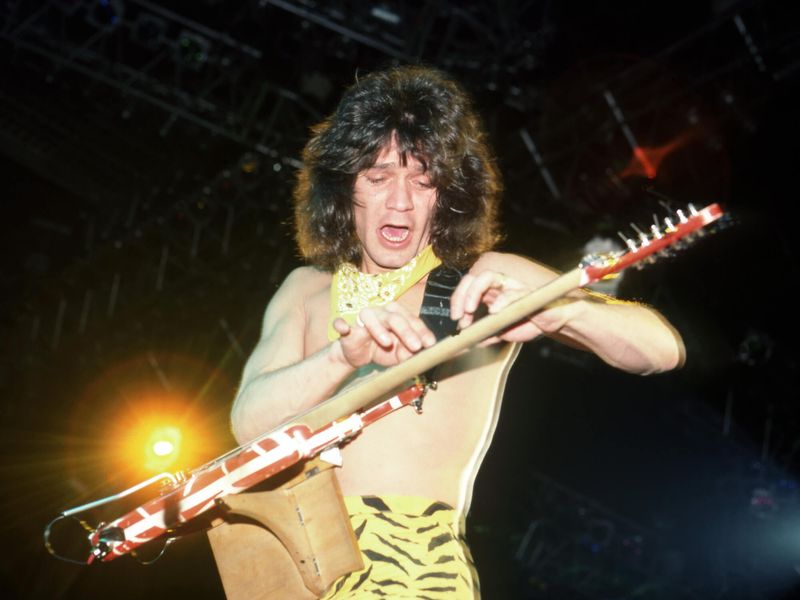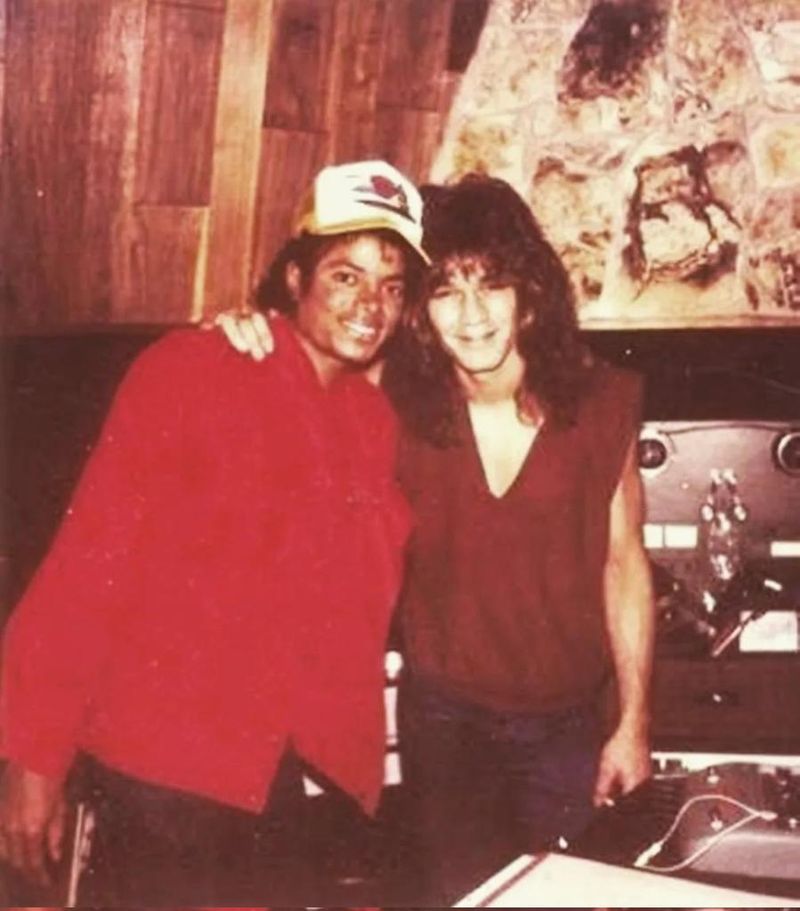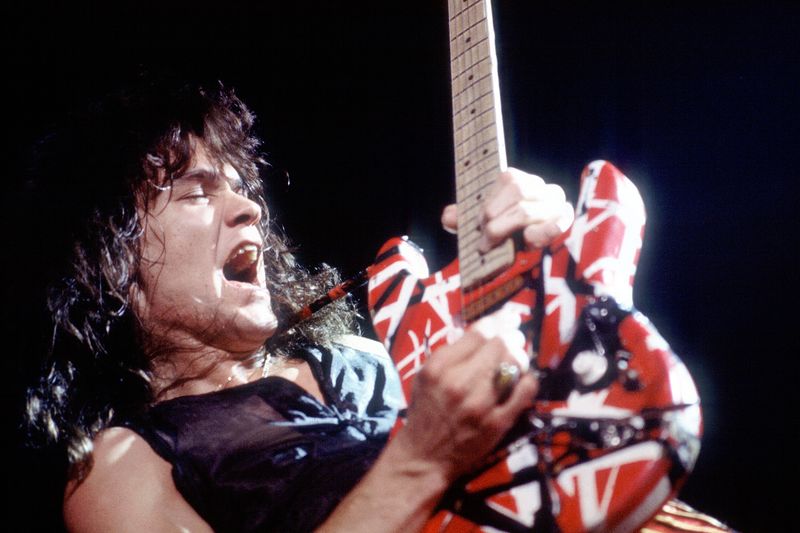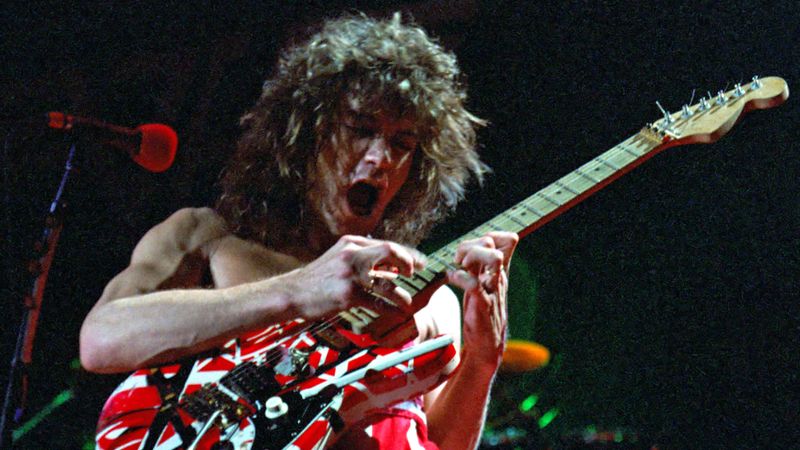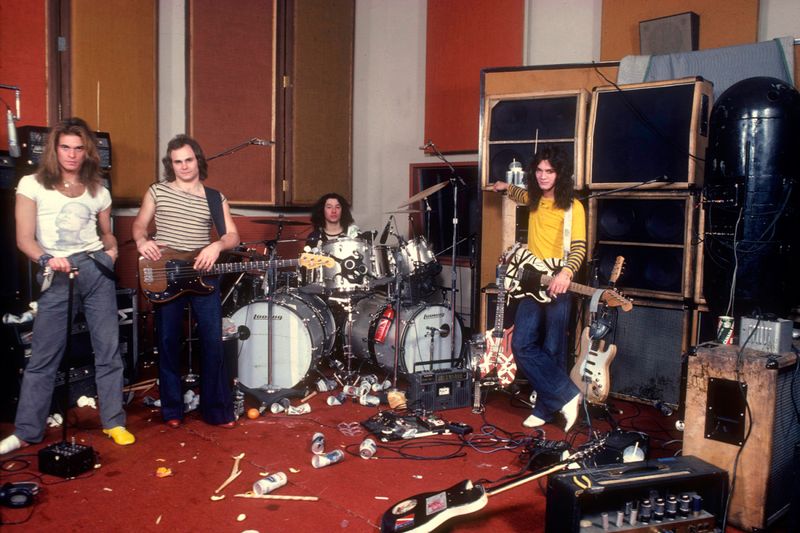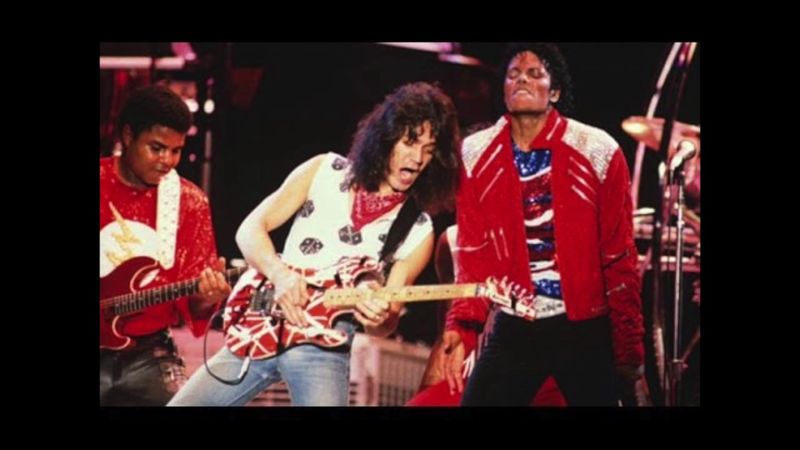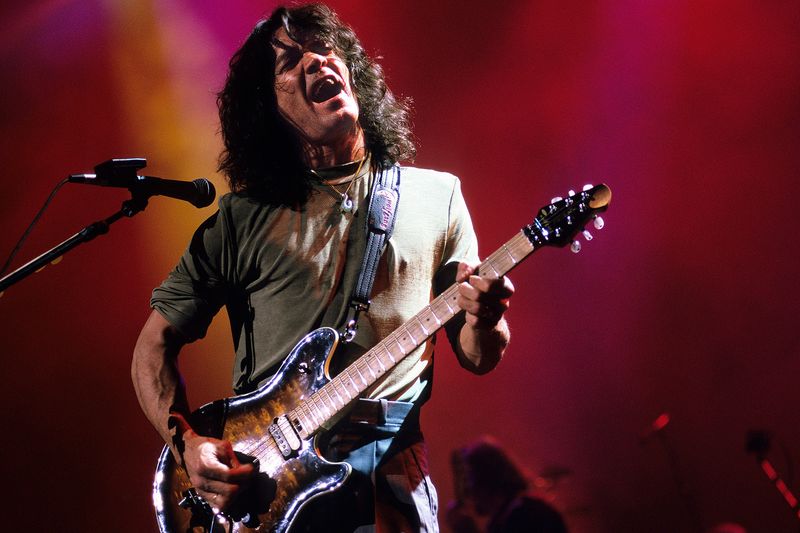Eddie Van Halen delivered one of the most iconic guitar solos in music history on Michael Jackson’s ‘Beat It.’ Despite its fame, there are many fascinating facts about this legendary collaboration that remain lesser known.
Here, we explore ten intriguing aspects of Eddie’s contribution that not only showcase his musical genius but also highlight the creative spontaneity behind one of pop music’s most memorable moments.
1. He Recorded It as a Favor
Eddie Van Halen’s involvement in ‘Beat It’ was purely out of camaraderie. He famously didn’t charge for his electrifying contribution, treating it as a favor to Quincy Jones, the album’s legendary producer.
This magnanimous gesture also meant that Eddie received no official payment or writing credit for his work. Instead of focusing on financial gain, Eddie simply saw the project as a fun opportunity to collaborate.
His willingness to help a friend resulted in one of the most celebrated guitar solos. Eddie’s altruism added an incredible layer to the song’s success, proving that sometimes passion surpasses profit.
2. He Reworked the Song’s Structure
Before recording his solo, Eddie Van Halen made some unapproved but critical changes to ‘Beat It.’ He rearranged parts of the track, which he tactfully did without consulting Michael Jackson or Quincy Jones.
These adjustments, though subtle, significantly enhanced the song’s overall impact. His ability to envision the song’s potential beyond its initial arrangement demonstrated his profound musical insight.
Eddie’s instinctive sense of what would resonate more strongly with listeners was instrumental in refining the song. This act of spontaneous creativity resulted in a more engaging and dynamic musical experience.
3. It Was Essentially Done in One Take
Eddie Van Halen’s natural flair for improvisation was pivotal during his recording session for ‘Beat It.’ Known for his spontaneous creativity, he delivered his iconic solo in what was essentially a single take.
His ability to capture such raw energy and emotion on the spot is a testament to his exceptional talent. This near one-take wonder meant there was little need for subsequent tinkering.
It was an unfiltered glimpse into Eddie’s artistic process, capturing the essence of his musical brilliance. His instinctive approach brought a fresh, electrifying dimension to the track that has stood the test of time.
4. The Session Was Brief but Intense
Eddie Van Halen’s studio session for ‘Beat It’ was a whirlwind affair. He spent only a brief period at Westlake Recording Studios, capturing his solo with efficiency and intensity.
Arriving, listening to the track, recording, and leaving promptly—all in an afternoon. Despite the brevity, the session was marked by a palpable sense of focus.
Eddie’s ability to produce such a powerful solo in a short time underscores his unmatched skill and creativity. His swift yet impactful contribution became a defining moment of the song, adding an unforgettable rock edge to the pop classic.
5. Legendary Frankenstrat Tone
Eddie Van Halen brought his signature sound to ‘Beat It’ using his famous Frankenstrat guitar. This instrument, noted for its distinctive design and customized electronics, delivered the searing tone known as the “brown sound.”
It was this unique sound that added a fiery intensity to the solo. The Frankenstrat’s innovative modifications allowed Eddie to push sonic boundaries, creating an auditory experience unlike any other.
His ability to harness this customized guitar’s potential contributed significantly to the solo’s dramatic flair. The Frankenstrat remains synonymous with Eddie’s pioneering approach to guitar playing.
6. The Iconic Fret Tapping
Eddie Van Halen’s advanced fret tapping technique became a highlight in ‘Beat It,’ mesmerizing listeners with its intricate precision.
While already familiar to Van Halen fans, this technique was new to many pop music enthusiasts experiencing it for the first time.
His innovative approach to guitar playing, showcasing rapid finger movements across the fretboard, added a complex yet accessible layer to the solo.
This dynamic display of talent bridged the gap between rock and pop audiences, elevating the track’s appeal. Eddie’s tapping showcased not only his virtuosity but also his ability to connect with diverse listeners.
7. Studio Speaker Mishap
An intriguing tale surrounds Eddie Van Halen’s recording session for ‘Beat It’—his playing was reportedly so intense that it caused a studio speaker to catch fire.
Though this story remains a blend of fact and myth, it perfectly captures the sheer power of Eddie’s performance. Whether true or not, the anecdote highlights the awe-inspiring force of his guitar solo.
It symbolizes the electrifying energy that Eddie infused into the track, a quality that continues to captivate audiences. The story reinforces the monumental impact of his contribution, solidifying his legendary status.
8. Uncredited in the Album Liner Notes
Despite his notable contribution to ‘Beat It,’ Eddie Van Halen wasn’t credited in the original vinyl pressings of Michael Jackson’s ‘Thriller.’ His involvement became widely recognized only through later interviews and word of mouth.
The absence of official recognition in the album liner notes didn’t diminish the significance of Eddie’s work. His uncredited input added an element of mystery to the iconic solo.
This behind-the-scenes contribution continued to fuel discussions among fans and musicians alike, further cementing his legacy as a guitar hero.
9. No Appearance in the Music Video
Eddie Van Halen’s contribution to ‘Beat It’ was entirely musical, as he didn’t appear in the accompanying music video. The video focused on elaborate dance sequences and a storyline reminiscent of ‘West Side Story,’ leaving no room for Eddie’s presence.
Despite his absence, the impact of his guitar solo remained undeniable, driving the song’s crossover appeal and success. The decision to omit him visually did not detract from the power of his musical input.
His role in shaping the track’s sound continues to be celebrated, even without a visual representation in the video.
10. Cross-Genre Influence
Eddie Van Halen’s guitar solo in ‘Beat It’ played a pivotal role in bridging the worlds of pop and rock music. The success of this collaboration inspired future cross-genre projects, encouraging artists from diverse backgrounds to work together.
The innovative blend of pop vocals with rock guitar set a precedent for musical experimentation. It showcased how genre boundaries could be blurred, inviting a broader audience to appreciate various musical styles.
Eddie’s contribution demonstrated the potential for artistic synergy, influencing countless musicians and fostering a new era of collaborative creativity.


